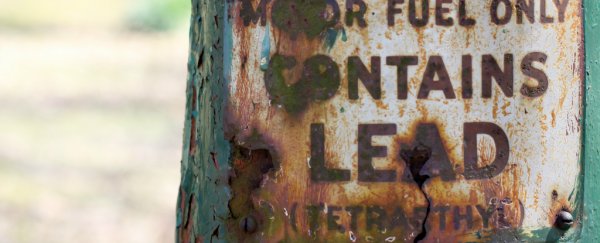This article was written by Ivy Shih and was originally published by The Conversation.
A new study has linked childhood exposure to lead in air and the likelihood of aggressive crimes related to impulsive behaviours in later life. The population study, published today in the journal Environmental Health, looked at the relationship between rates of aggressive crime and early exposure to airborne lead particles during the years in Australia when lead petrol was still widely used. The study examined data at the suburb, state and national level.
"After controlling for major socio-demographic correlates of crime there is a strong positive relationship between lead in air levels and subsequent crime rates."
Mark Taylor, a professor of environmental science at Macquarie University and the research team's leader, said the study was the first of its kind in Australia to test a potential link between aggressive crime and childhood lead exposure on such a broad scale.
"This is further proof that childhood exposures to neurotoxins, such as those released during the period of leaded petrol use have lifelong effects," he said.
The researchers found no link between lead exposure in childhood and fraud after accounting for income and education. In contrast to crimes of aggression, fraud is a considered to be a pre-meditated crime. The finding suggests a possibility that lead could be implicated because it is known to cause problems with impulse control.
"Crimes of aggression are considered impulsive crimes and the study showed quite clearly that that the highest assault rates were found in places of highest lead exposure."
Blood lead levels in the Australian population have fallen significantly since the final removal of lead from petrol in 2002, the study noted, together with rules introduced in 1997 to reduce the amount of lead allowed in paint.
However, exposure to environmental lead results in damage to the brain in exposed communities, which is manifested later in life via increased rates of aggression.
"After controlling for socio-demographic variables, the study showed that the concentration of lead particles in the air reliably predicted changes in the rates of aggressive crime. Lead was the strongest predictor is our study model and it explained 30 percent of the variance in assault rates 21 years later," said Taylor.
The six suburbs across NSW were Boolaroo, Earlwood, Lane Cove, Port Kembla, Rozelle, and Rydalmere. The researchers also looked at data for states, as well as Australia as a whole.
At the state level, strong positive correlations between total (tonnes per annum) petrol lead emissions and death by assault rates were found for NSW and Victoria. At a national level, the data also demonstrated a positive correlation between lead emissions and death by assault rates, but the association was weak.
The removal of lead in petrol had a significant effect, Taylor said, however, atmospheric lead remains elevated in a smaller number of Australian communities. Populations near sites of ongoing industrial lead ore mining and processing such as in Mount Isa, Broken Hill, Port Pirie and Roseberry remain at risk from exposure to lead.
"The implication of this study is that the impact of environmental lead exposure extends far beyond childhood," Taylor said.
Disturbing and preventable
Merlin Thomas, an adjunct professor of preventive medicine at the Baker IDI Heart & Diabetes Institute who has researched lead exposure, said the new paper showed the potential importance of lead exposure in Australia.
"Lead has important effects on brain development in children, affecting intelligence, academic achievement and behaviour. As disadvantage and crime are closely correlated with the prevalence of poor academic performance, it is perhaps not surprising that an association between criminality and lead exposure in childhood may exist," said Thomas, who was not involved in the study.
"At the same time, it is nonetheless disturbing and more importantly is potentially preventable."
Ivy Shih, Editor, The Conversation.
This article was originally published by The Conversation. Read the original article.
